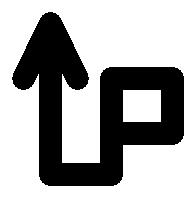PAIN IS A BEHAVIOR
Although some people's behavior may be a pain (couldn’t resist), I have come to think of the experience of pain as being an "expression", either of some disturbance within the physical body, or some disturbance in the thought process. I'm convinced that people can get into the habit of having a pain on cue, so to speak. They can literally program themselves to get the pain at certain times and in certain situations. In that way, it might very well be thought of as a learned behavior.
Recently I saw an ad in a magazine that I had to cut out and use in classes. I MUST share this with all of you. It was for a new migraine medication and showed a pondering woman at her work desk with bubbles of thoughts above her head. The sequence went like this:
Bubble #1: "If I get a MIGRAINE (their emphasis) tomorrow......"
Bubble #2: "I'll never make it through that two-hour recital....."
Bubble #3: "But Kate's counting on me to be there....."
Bubble #4: "Plus, I've got that presentation for work due Monday....."
Bubble #5: "Somehow I'll have to get it done."
Then the ad states the following:
"Thinking about migraines even when you're not having one? Maybe it's time for a change. TxxxxxX can help stop migraines before they start so you can get fewer of them to think about......"
Tell me that ad agencies don't know something about the power of suggestion. And by the way, how do you "STOP" something that doesn't exist…yet???
I'm working with a gentleman who fell off a ladder 3 1/2 years ago and had part of his brain removed. His wife was told he would be a quadriplegic the rest of his life and never regain his body or brain functions, and that she should put him in a nursing home and get on with her life. She didn’t listen. When she called me in to work with him on pain and attitude about 5 months ago, he had recovered a remarkable portion of movement of most of his body. He still must be lifted in and out of wheelchair, but is walking between bars with a physical therapist and astounding the doctors.
On my first visit, he had some pain going on in his back. On a scale of 1-100, with 100 being the worst, it was at about 70. Just talking with him and getting him to create some imagery to represent releasing endorphins from his brain and sending them down his back, he was able to immediately take it to 40. A few minutes later it was insignificant. His mind envisioned the endorphins as musical notes, so that is what we have used since.
Sorry to be so wordy (you know ME), but back to the point. In speaking with him, it became obvious he had come to “expect” that whenever he sat for over ½ hour, the pain would show up. I think pain comes from our belief system. As a matter of fact, I would go so far as to say that ALL of our problems, conditions, painful memories, diseases, etc., are caused, exacerbated or affected by our belief system. That may be a radical stretch for some to accept, but as long as I hold that “belief” in my energy when working with clients, I somehow seem to be able to help them consider that possibility, and sometimes that alone facilitates profound changes that help them to move forward. The reason I believe that hypnosis and NLP are so powerful in dealing with the experience of pain is that it allows the person to go inside to discover the source of what really needs attention. Change the beliefs and the expectations, and you can change the expression and experience of pain.
Tuesday, August 19, 2008
PAIN IS A BEHAVIOR!
Labels:
back,
belief,
Body,
brain,
disease,
endorphins,
energy,
head injury,
healing,
hypnosis,
Medicine,
migraine,
Mind,
NLP,
nursing,
pain,
physical therapist,
suggestion
Subscribe to:
Comments (Atom)

